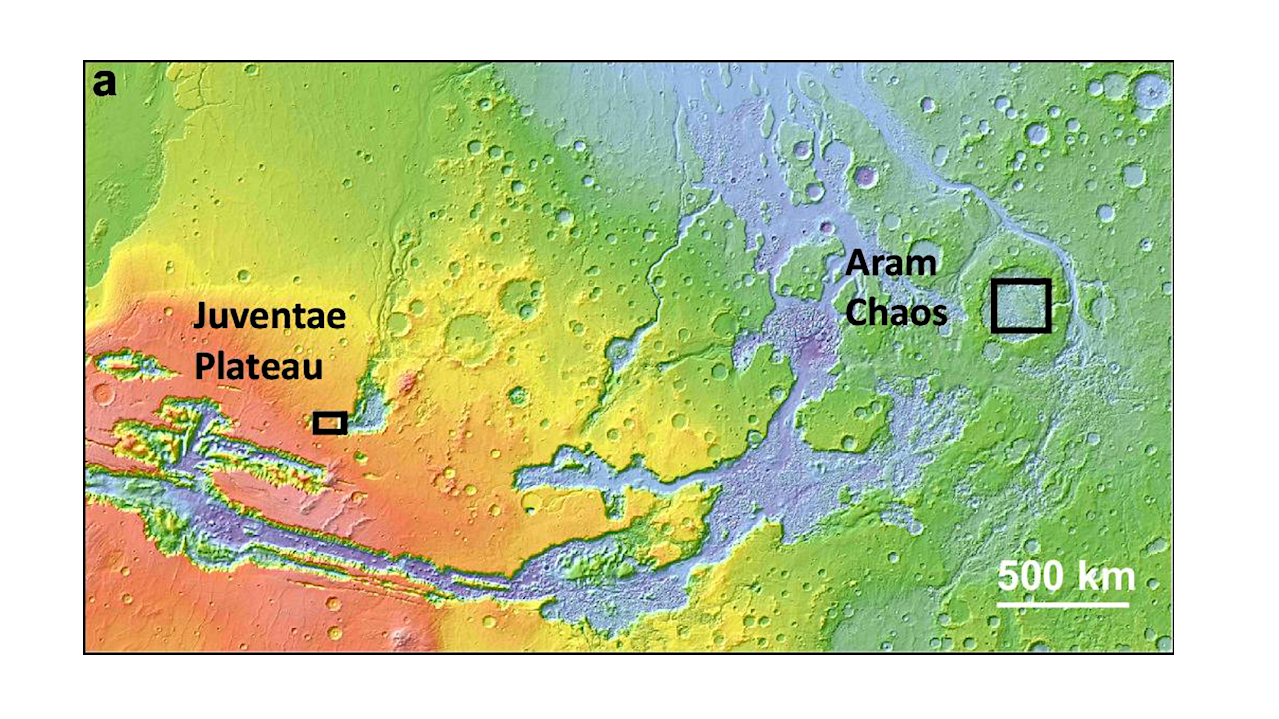Recent findings have unveiled the presence of ferric hydroxysulfate (Fe3+SO4OH) on Mars, shedding light on the planet’s complex geochemical history. This unusual iron sulfate phase features unique spectral bands that set it apart from known minerals, capturing the attention of scientists for over a decade. Its detection in layered sedimentary rocks at locations such as Aram Chaos and the plateau above Juventae Chasma offers critical insights into Martian geological processes.
The formation of crystalline ferric hydroxysulfate occurs when hydrous ferrous sulfates are heated to temperatures of at least 100 °C. This mineral exhibits a prominent spectral band at 2.236 μm, which closely matches the spectral features observed in Martian terrain. Researchers suggest that hydrated sulfates in these areas likely resulted from evaporative processes or low-temperature alterations. In contrast, the presence of Fe3+SO4OH points to a more dynamic geological history involving heating and oxidation, potentially driven by volcanic activity, ash deposition, or hydrothermal influences.
Geological Significance of Ferric Hydroxysulfate
The identification of ferric hydroxysulfate on Mars indicates significant geological activity that may have influenced the planet’s surface. The mineral’s formation suggests past conditions that favored high temperatures and oxidation, contrasting with the cooler, wetter environments previously believed to dominate Mars. Understanding the geochemical environment that supports the formation of such minerals is crucial for piecing together the planet’s climatic history.
The Mars Orbital Laser Altimeter (MOLA) has provided valuable topographical data, highlighting the elevation differences across equatorial regions of Mars. Black boxes on MOLA maps pinpoint the locations of Juventae Plateau and Aram Chaos, with red indicating higher elevations and blue indicating lower areas. This topographical context aids in understanding how geological processes shaped these regions over time.
Analysis of data from the Compact Reconnaissance Imaging Spectrometer for Mars (CRISM) demonstrates the mineral composition of the plateau above Juventae Chasma. This analysis reveals variations, such as pyroxene-bearing basalt in green and polyhydrated sulfates in blue, with Fe3+SO4OH-bearing phases illustrated in red. The detailed spectral signatures from CRISM spectra indicate that none of the known minerals match the unique spectral profile of the ferric hydroxysulfate outcrop.
Future Research Directions
The discovery of ferric hydroxysulfate invites further investigation into Mars’ geological history and potential habitability. As scientists continue to analyze spectral data and surface compositions, they aim to construct a comprehensive picture of the environmental conditions that led to the formation of these minerals.
Future missions to Mars may focus on obtaining samples from regions rich in sulfate minerals, enhancing our understanding of the planet’s past. The implications of this research extend beyond geological curiosity; they may also inform the search for past life on Mars by revealing the environmental conditions that once prevailed.
As research progresses, findings on ferric hydroxysulfate will likely play a pivotal role in our understanding of not just Mars, but also planetary formation processes throughout the solar system. The ongoing exploration of Mars continues to captivate scientists and enthusiasts alike, promising new discoveries that could redefine our understanding of the Red Planet.
